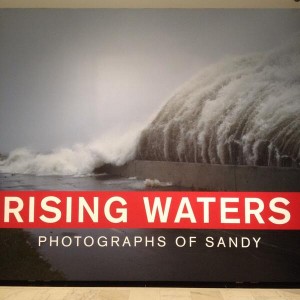 Two aesthetic treats a week ago Thursday: #RisingWaters at the City Museum, and Cry Trojans by the Wooster Group at the Performing Garage. In different ways, both about the cold pressure of beauty, both a bit disturbing, and both still have my head spinning.
Two aesthetic treats a week ago Thursday: #RisingWaters at the City Museum, and Cry Trojans by the Wooster Group at the Performing Garage. In different ways, both about the cold pressure of beauty, both a bit disturbing, and both still have my head spinning.
“Cry, Trojans” has stirred up some controversy among my fellow theater-goers, and my thinking about it owes much to the spirited FB-insightfulness of Holger Syme, Karl Steel, and Alison Kinney, though in the end I liked the show more than each of them did. Plenty of reasons not to like it: it is slow, opaque, and willfully cavalier, filled with hackneyed Native American stereotypes. The Woosters play the Trojans, in this compressed version of Shakespeare’s Troilus and Cressida, as Red Indians, complete with singing and dancing. (The show originated in 2012 in the UK, when the RSC played the Greeks. I blogged about it then, thinking about the controversy it caused among the Shakespeare conferencers. The New York version mostly cuts the Greeks, showing short clips of the 2012 performance to fill in the plot, and having a few actors briefly assume Greek parts with masks. The action is all in Troy.)
Tom Cartelli smartly parsed the Wooster 2012 show in a Shakespeare Quarterly article that explores the company’s willful strangeness, disorienting strategies, and efforts to re-make the Trojan War through a film about an Inuit Legend. I pretty well agree with him, but I also thought a lot, this time especially, about what Splendor in the Grass, the 1961 Elia Kazan film featuring the gorgeous young stars Warren Beatty and Natalie Wood, was doing. Scott Shepherd’s Troilus stares up at Warren Beatty on video monitors with a quizzical look: am I doing it right? Is this what love is?
 The Red Indian caricatures are pretty extreme, but, as the 2012 program noted, the Woosters are thinking partly about the fantasy America of the German novelist Karl May, who wrote late 19c novels about the American West without traveling there. I also think about Kafka in Prague and his “Wish to Be a Red Indian”:
The Red Indian caricatures are pretty extreme, but, as the 2012 program noted, the Woosters are thinking partly about the fantasy America of the German novelist Karl May, who wrote late 19c novels about the American West without traveling there. I also think about Kafka in Prague and his “Wish to Be a Red Indian”:
If one were only an Indian, instantly alert, and on a racing horse, leaning against the wind, kept on quivering jerkily over the quivering ground, until one shed one’s spurs, for there needed no spurs, threw away the reins, for there needed no reins, and hardly saw that the land before one was smoothly shorn heath when horse’s neck and head would be already gone
“Cry, Trojans” seems to me an experiment in extreme mediation. I love its intensity, its manic energy, its recklessness. In 2012, I argued into the night about how the Wooster-method speaks to our age’s deep engagement with video screens as self-structuring devices. What else do wee see in our iPhones? This time, without the RSC Greeks and their professional counterpoint, I thought about the love story. The Wooster lovers are knowing and smart, but still can’t help being steamrolled by the oldest love story in the book. As in Shakespeare’s play, I think the Wooster production is partly about the overwhelming power of generic forms, even (or especially?) after we’ve stopped fully believing in them.
Or maybe I enjoyed the show so much because I was still in the afterglow of #RisingWaters at the City Museum?
There’s more to tell about last Thursday, the start of my spring semester. My day started at 5 am, when I turned the shower knob, and nothing happened. Frozen water in the pipes: some metaphor for the first day of class!
After teaching, and remotely helping with plumbers (all thawed nicely by mid-afternoon), I got to #RisingWaters around 3 pm, driving through a small snowbank to find street parking on 99th and Madison. I love the Museum of the City of New York, up on 103rd St., teetering on the northern fringe of Museum Mile. This show drew its images from an open call for photographs of Sandy that generated 10,000 images from over 1000 photographers, professional and amateur. The show opened on October 29, the anniversary of the hurricane’s landfall, but I’ve only now been able to get to it. Disturbingly gorgeous, raw, intimate. I’m plotting my next trip there already.
Two pictures in particular struck me, both from the Rockaways. (The show has images from all over New York and New Jersey, including some heartbreaking images of Mantaloking, NJ, where I spent many happy summer days at the beach as a kid.) One was taken from inside a porch or maybe front room of a small house, looking out from inside a screen door. The screen’s gone, and water cascades over and through the lower half of the door in a glimmering, curving arc. A beautiful waterfall, pouring into someone’s home.
The other picture I remember was simpler: on a beach in Far Rockaway the day after the storm, someone arranged driftwood to form a pattern in the sand where a house used to sit: “THIS IS GLOBAL WARMING.”
I bought two catalogs, Amy Medina’s Salted Wounds and the Wyatt Group’s #Sandy, a book of iPhone photos. Much to look at and think about. What is the relationship between beauty and destruction?
Driving downtown after the show, thinking about Sandy, I stopped for a half hour on E. 79th street. It wasn’t my idea. A couple guys double-parked a blue van, grabbed paint cans & a ladder, and went into an apartment to do some work. I came along a few minutes later, but couldn’t get past them. A snow plow maybe five cars in front of me couldn’t get its blade in between the double parked van on the right and the parked cars on the left. So we waited, maybe 20 cars spilling westward all the way to Park Ave. A couple of us got out of our cars, talked to each other, talked to the snowplow driver, tried to convince him to back up and pull behind the blue van so that the rest of us could pull around. That didn’t seem to be working at first, but eventually he agreed to give it a try. While the plow was trying to back up the guys with the ladder came back, loaded up, and we all drove away. Block party in Manhattan!
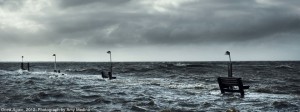 I made it downtown on time for green matcha tea at Cha-An on East 9th street, around the corner from the apartment I lived in during the early 1990s. Talked there with Marina Zurkow about some collaborative writing we’re doing for Oceanic New York about flood, disruption, engaging with environments. I came away with a few good ideas: “Instructions” as a genre. Soft-edged squares. Blowing water into an inflatable raft during a flood, which means physically expanding one small fluid body until the expansion of a bigger fluid body subsides. We talked about marshes, barrier islands, the Rising Waters show, an amazing petro-project she has going up at Rice this spring.
I made it downtown on time for green matcha tea at Cha-An on East 9th street, around the corner from the apartment I lived in during the early 1990s. Talked there with Marina Zurkow about some collaborative writing we’re doing for Oceanic New York about flood, disruption, engaging with environments. I came away with a few good ideas: “Instructions” as a genre. Soft-edged squares. Blowing water into an inflatable raft during a flood, which means physically expanding one small fluid body until the expansion of a bigger fluid body subsides. We talked about marshes, barrier islands, the Rising Waters show, an amazing petro-project she has going up at Rice this spring.
I parked in the snow in front of the Performing Garage at 33 Wooster for the 8 pm show. A delicious rye and orange bitters martini put me in a perfect mood, despite the cold wind outside and small folding chairs in the theater.
Some parts of the show were the same as in 2012, though I wasn’t surprised this time by the weird, half-alienated charisma of Scott Shepherd’s Troilus. I spent more time, this time around, thinking about Warren Beatty and Natalie Wood. Doomed Hollywood lovers as models for classical literary avatars? If Hollywood, Homer, Shakespeare, Chaucer, and any number of other artists and genres were getting mashed together in the small space of the Performing Garage, why was I moved by such a hyper-technical, ultra-referential performance? The show stopped for 10 minutes in the middle of the first act because of technical difficulties with the very complex sound system. Not a problem at all, at least for me.
The new title, “Cry, Trojans,” comes from Cassandra’s mad lament, her foreknowledge that the city will burn. It matches our foreknowledge of the destruction of Native American culture and its transformation into global kitcsch like May’s novels. But the lingering force of the play for me was in Troilus and Cressida’s semi-expressive faces looking up at Beatty and Wood on the glittering screens, matching their bodies into the stars’s postures, fitting desires and emotions into pre-arranged molds. They might not want to do it — we might not want to admit to it — but it happens. This show, in all its strange, at times awkward, mannered presentation, insists that there are no unmediated stories.
I left energized, happy, driving home in the snow after a long day.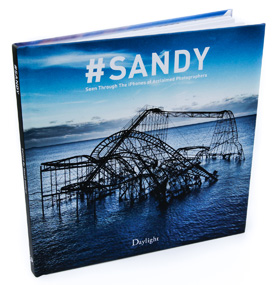
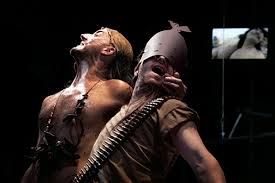
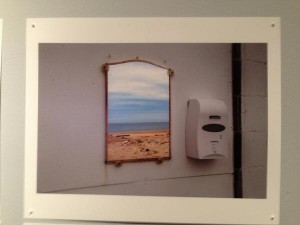
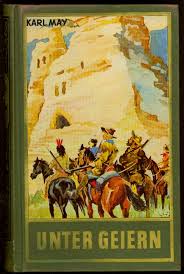
Hey Steve —
beautiful post. I don’t necessarily disagree with any of what you’re saying about Cry, Trojans — those are the show’s strengths, I think, and I completely agree that the way Troilus/Shepherd but also Cressida/Valk check in on the video was both compelling and at times oddly charming. I am a bit bothered by the relatively arcane frame of reference (Splendor in the Grass is a rather minor classic after all), but whatever. I also think that your concluding analysis is compelling. BUT here’s the thing: if they’d stuck with Smoke Signals and the like, I’d have been fine. Using Atanarjuat as one of the main filmic sources, however, was pretty off-putting to me. The Woosters may well be right that there are no unmediated stories, but they don’t get to pass that judgment on an actual First Nations art work, nor do they get to appropriate that (Innuit, Canadian) work to make a generalized point about, I don’t know, America and its foundational myths. That just struck me as pretty ignorant, or at least a bit blinkered.
Thanks, Holger. I confess I don’t know Atanarjuat, except via this show & Tom Cartelli’s SQ piece, but I take your point that it’s in a different category of representation than the Karl May novels or even a pastiche such as “Smoke Signals.” I also agree that the willful obscurity is sometimes hard to deal with, even for pedants like us. But I wonder: surely they are clear-eyed, even aggressive, about choosing that particular film to run through their mediation-mill? I have trouble believing it’s ignorance.
Tonight, by coincidence, Ayanna Thompson is bringing some GWU grad students to see Cry, Trojans, with a talkback by Shepherd and the producer. She invited me, but I promised my son I’d take him to a basketball game. I’d be curious to hear what they have to say.